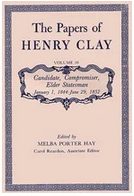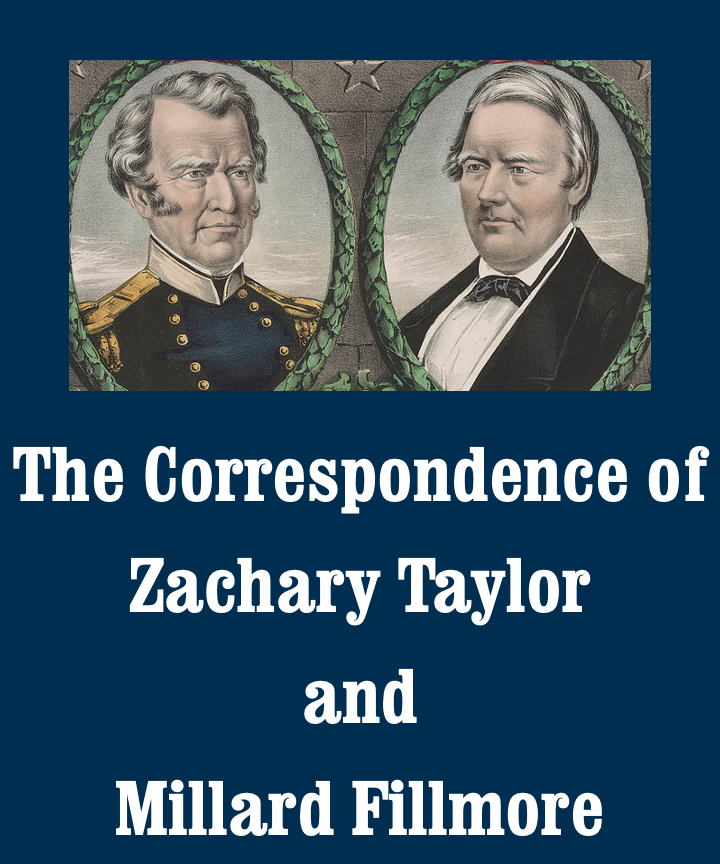I want to begin today’s entry by announcing a major addition to our staff. (Drumroll, please.) At the beginning of May, after an extensive search, Amy Larrabee Cotz joined the Taylor-Fillmore project as associate editor. She had just completed her role as senior associate editor of the Dolley Madison Digital Edition, an award-winning edition of the pioneering first lady’s papers. Part of the University of Virginia Press’s American History Collection, the DMDE already has published over three thousand documents. Look for its thirteenth and final digital volume later this year. Ms. Larrabee Cotz also has researched the lives of Black Americans for the Virginia Foundation for the Humanities and the Montpelier Foundation. For more on her background, see our staff page. Her expertise in documentary editing and social history already are enhancing our work improving access to the letters of Taylor and Fillmore. I’m delighted to welcome her to the project.
Reviewing my new colleague’s previous work reminded me of the value, often underappreciated, of long-established documentary editions. The Taylor-Fillmore project is barely a year old, but other projects have been hard at work for decades. They’ve published paper and digital volumes of primary sources that scholars, teachers, students, and history buffs have used to learn about the past. Sometimes we do so without realizing it. When I read a good history book, such as James M. McPherson’s Battle Cry of Freedom: The Civil War Era, I may not notice that its author relied on editions including The Collected Works of Abraham Lincoln, The Papers of Jefferson Davis, and The Papers of Ulysses S. Grant.
So I thought I’d use this blog entry to spread the word about a few other quality editions. That plan leaves me plenty of choices, from The Papers of Thomas Jefferson—the first modern documentary edition, begun in 1943 and now up to sixty-two volumes produced by two projects—to the Race & Slavery Petitions Project to In Love and War: The World War II Courtship Letters of a Nisei Couple. You can read lists of (and links to) well over a hundred projects curated by the Association for Documentary Editing and the National Historical Publications and Records Commission.

Likely of interest to this blog’s readers are those projects that already have published letters of Taylor and Fillmore. The vast majority of their correspondence remains unpublished—we have plenty of work to do!—but some correspondence with a few major historical figures has appeared in editions focusing on them. By far the most substantial case is The Lady and the President, Charles M. Snyder’s edition of letters exchanged between Fillmore and Dorothea Dix. Fillmore corresponded with the mental health care reformer from 1850 to 1869. Fortunately he did not, as she asked at the very beginning, “destroy all my letters” (p. 84). Thanks to Snyder, we now easily can read many of them.
Other editions feature smaller numbers of Taylor or Fillmore letters. Both Ms. Larrabee Cotz and I previously worked at projects focusing on individuals who corresponded with them. The Dolley Madison Digital Edition includes two letters from Madison to Taylor. In that of June 8, 1846, she introduced a Jesuit priest who was accompanying the U.S. army to Mexico. The Correspondence of James K. Polk includes several letters from the late 1840s between President Polk and president-to-be Taylor, regarding the Mexican-American War and honors conveyed by Congress upon the successful general. The final volume summarizes the single known extant letter from Fillmore to Polk, accepting an invitation to dinner at the White House as he prepared to take office as vice president.

Taylor and Fillmore were Whigs, and unsurprisingly corresponded more often with fellow Whig politicians than with Democrats such as Polk. The Papers of Henry Clay includes partial or full texts of eight letters from and seven letters to them in its volume covering 1844–52. The Papers of Daniel Webster, now part of the online American History Collection, has 110 letters to or from Fillmore. The Seward Family Digital Archive, online and free to all users, includes two dinner invitations from Fillmore to Frances Miller Seward and William Henry Seward, including this one from shortly before Christmas 1850.
 Another Whig of the 1840s gained fame later as a Republican. The Papers of Abraham Lincoln Digital Library features four letters from the Illinois legislator and congressman, usually cosigned with others, to Taylor. Among them is this one of January 1, 1849, congratulating Taylor “on your Elevation to the Presidency of this great and growing Republic”—and recommending someone for a cabinet post. Lincoln’s future Confederate counterpart, Jefferson Davis, was a Democrat but also Taylor’s son-in-law. He did correspond with his Whig kinsman, as I’ve noted in this blog before, and hence The Papers of Jefferson Davis includes some of those letters.
Another Whig of the 1840s gained fame later as a Republican. The Papers of Abraham Lincoln Digital Library features four letters from the Illinois legislator and congressman, usually cosigned with others, to Taylor. Among them is this one of January 1, 1849, congratulating Taylor “on your Elevation to the Presidency of this great and growing Republic”—and recommending someone for a cabinet post. Lincoln’s future Confederate counterpart, Jefferson Davis, was a Democrat but also Taylor’s son-in-law. He did correspond with his Whig kinsman, as I’ve noted in this blog before, and hence The Papers of Jefferson Davis includes some of those letters.
The Papers of John C. Calhoun, another Democrat associated with slavery and sectionalism, has two letters from the South Carolinian to President-elect Taylor. Calhoun wrote both in February 1849. Moving outside politics and into Fillmore familial fare, Stanley and Rodelle Weintraub’s Dear Young Friend: The Letters of American Presidents to Children features four letters from Millard to his daughter Mary Abigail.
I encourage you to take a look at these editions and others. We can learn so much about history—including but well beyond the twelfth and thirteenth presidents—from the words of those who experienced it. As we prepare to celebrate the United States’ birthday in a couple weeks, what better time could there be to read some original letters from the nation’s past?
